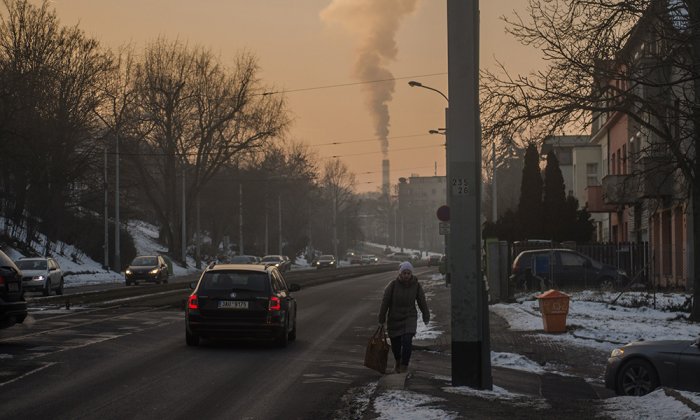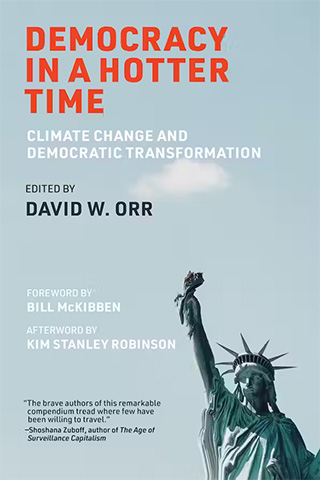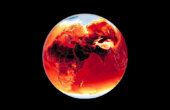Why Marginalized Communities Pay the Highest Price for Climate Change

If we do not save the environment, then whatever we do in civil rights will be of no meaning, because then we will have the equality of extinction.
—James Farmer Jr., Cofounder of the Congress On Racial Equality
In 2019, The UN Special Rapporteur on Extreme Poverty and Human Rights, Philip Alston, issued a report warning that “Climate change threatens to undo the last 50 years of progress in development, global health, and poverty reduction. … It could push more than 120 million more people into poverty by 2030 and will have the most severe impact in poor countries, regions, and the places poor people live and work.”

Climate change is the existential crisis of our time. A product of our more than century-long dependence on fossil fuels to power our economy, the crisis looms as a force multiplier for every form of historic inequity we as a global society have tolerated — and perfected — over the course of time. At its origins, the need to power our economy was lauded as a necessity for economic growth and human progress. However, its buildout came at the expense of vulnerable communities that were deemed disposable for the greater good — which is why, both globally and here in the United States, the buildout of climate-changing fossil fuel infrastructure does not happen in affluent areas.
Pipelines, refineries, and compressor stations don’t get placed in the fancy parts of town. They get placed in areas that have historically been subject to economic and political exclusion at the hands of racially discriminatory or economically exploitative policies. Appropriately named “sacrifice zones,” these areas came to the public discourse in the 1970s in regard to strip mining that was devastating Appalachian and western communities of poor workers — who, ironically, were often employed by the same industry that was causing them harm.
This flawed form of utilitarianism would continue to dominate economic theory, eventually being used to justify the placement of expanded fossil fuel infrastructure, coal power plants, petrochemical facilities, landfills, and the like. The idea that some communities — usually those that were either too poor or too melanated, too rural or too coastal, too undesirable — needed to be sacrificed for the greater good, or to provide some intrinsic value to society, continues to this day.
The idea that some communities needed to be sacrificed for the greater good, or to provide some intrinsic value to society, continues to this day.
In April 2022, a study by joint researchers at the University of California–Berkeley, the University of California–San Francisco, and Columbia University confirmed this. In comparing data on the location of plugged and active oil and gas wells to data from maps demonstrating redlining that occurred under the Home Owners’ Loan Corporation, the joint study found that historically redlined communities have nearly 200 percent more oil and gas wells than non-redlined neighborhoods.
How did this happen? Enter the Underwriting Manual of the Federal Housing Administration. This document established the process of redlining, saying that “incompatible racial groups should not be permitted to live in the same communities,” meaning that loans to Black and immigrant communities could not be insured. This document also went further, with a recommendation that highways would be an effective tool for separating Black and immigrant communities from white neighborhoods.
Beginning in the early 1930s, highways were preferentially constructed through Black and brown communities across the nation. Entire Black and immigrant communities were bulldozed for preferred placement of our National Highway System — communities like Freedman’s Town, in North Dallas, Texas; West Bellfort in Houston; and West Oakland in California.1
These highways served as channels of commerce along which big industry developed, searching for locations to place the polluting assets of their operations in areas that were near these channels of commerce but also did not have the political or financial capital to offer significant resistance. These locations happened to be the same communities — poor communities and communities of color — that, because they were kneecapped in building wealth by being shut out of the homeownership process, were now economically and politically vulnerable. Today, highways are still a significant source of air pollution with communities of color — the same communities that were redlined being disproportionately exposed to vehicular air pollution.
This course of action put in place a feedback loop of inequity, which still exists. It’s the reason that today, 68 percent of African Americans live within 30 miles of a coal-fired power plant. It’s the reason that African Americans are 75 percent more likely than white people to live in fenceline communities close to oil and gas infrastructure that pollutes our air and changes our climate. It’s the reason that, in 46 U.S. states, people of color live with more air pollution than white people.
This legacy also leads to the development of comorbidities in these communities: Higher exposure to air pollution and lower exposures to green space mean higher morbidities from asthma, respiratory disease, and death from extreme heat — all issues that are made worse with the impacts of the climate crisis. Thereby this phenomenon — a racially discriminatory policy decision made over a century ago — becomes the norm generation after generation. And the greatest cruelty of all: These same communities that have endured this feedback loop are now hit first and worst by the climate crisis, despite contributing the least to its design. Poor communities, in the United States and around the world, despite paying a higher percentage of their income to meet energy needs, on average, consume less energy per capita than their wealthy counterparts, meaning that they have historically been less responsible for the demand for fossil fuel energy.
African Americans are 75 percent more likely than white people to live in fenceline communities close to oil and gas infrastructure.
This history makes it critical for us to see these communities not as victims, but as communities victimized by intentional bad policy decisions. It is also the reason that, in our efforts to stymie the current ecological crisis, we must infuse, into the core, lenses of climate and environmental justice. Van Jones says it like this:
The green economy should not just be about reclaiming throw-away stuff. It should be about reclaiming thrown-away communities. It should not just be about recycling things to give them a second life. We should also be gathering up people and giving them a second chance. In other words, we should use the transition to a better energy strategy as an opportunity to create a better economy and a better country all around.2
The current and future transition to a clean energy economy represents the emergence of a multi-trillion-dollar market, on the scale of $50 to $131 trillion. Comparatively, the entire Internet of things was valued at $8.9 trillion in 2020. Additionally, a burgeoning mass of political discourse is calling for not only climate investment, but climate investment through a lens of equity that seeks to redress historic harm — and also create opportunity for ownership and self-determination for communities. The latter is especially key: To see the scale of this current transition — which sits on a scale of multiple times of the current entire market for the Internet of things — and to talk about climate justice for frontline communities only through the limited language of their role as a workforce, and not as owners in the emerging economy, is a disparity in and of itself. It is a form of climate apartheid, wherein we delegate these communities into a well-paid underclass that serves as our worker bees and not as our true co-collaborators of the clean energy future.
In my personal activism, I’ve coined this moment as the moment of 7Cs: the Critical Coalescence of Consciousness and Capital to Combat the Climate Crisis. In this moment of 7Cs, we must recognize that with this transition comes a once-in-existence chance to begin to redress some — not all — but some of the harm that has been historically done to frontline communities, here in the United States and across the globe. This moment is of such a scale that no one silo of society can accomplish a solution on its own: science cannot solve it on its own; government cannot solve it on its own; private finance cannot solve it on its own; grassroots activism cannot solve it on its own; the faith community cannot solve it on its own. It will take all of us, united under a new politic, to meet this moment, with the best that our collective humanity has to offer. In doing so, we secure a future for us all.
William J. Barber III is an environmental and climate justice scholar and advocate, with nearly a decade of social justice organizing experience and deep academic training in both the science and the law behind environmental and climate issues. He is the founder and CEO of the Rural Beacon Initiative — a business focused on strategies to increase the participation of BIPOC leaders in the energy and food supply chains. His work has been featured in PayPal’s Rising Leaders Series, as well as in NextGen America’s 30 Around 30: Young Black Changemakers, working to build a more just and equitable society. This article is excerpted from a longer essay that appears in the volume “Democracy in a Hotter Time.”



